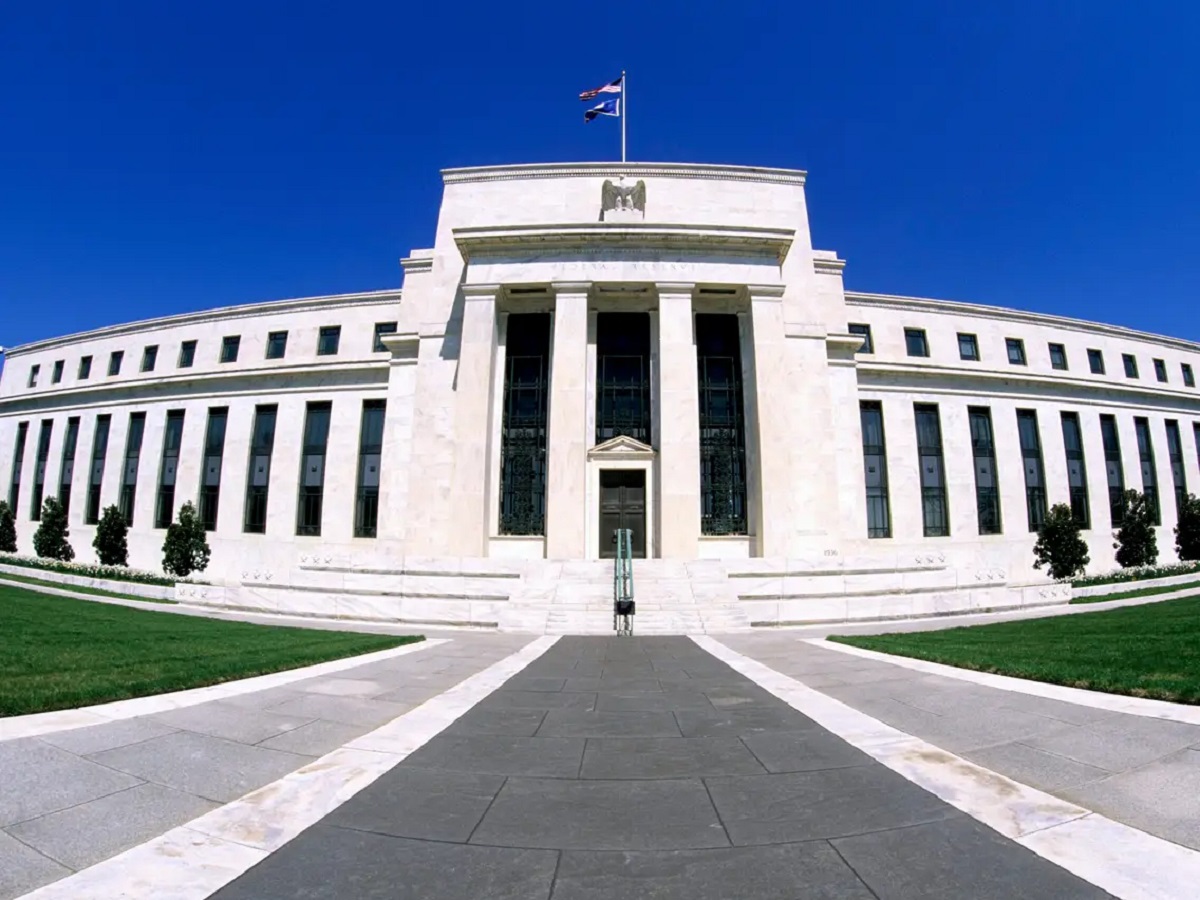Introduction
In the modern economy, the creation of money is not just limited to the printing of physical currency by the central bank. One of the key mechanisms through which money is created is fractional reserve banking. Understanding how fractional reserve banking works is crucial to understanding the dynamics of the economy and the role that banks play in the money creation process.
Fractional reserve banking is a system in which banks are required to keep only a fraction of customer deposits as reserves and can lend out the remainder. This means that for every dollar deposited, banks are allowed to lend out a certain percentage, creating new money in the process.
This concept of creating money out of thin air may sound perplexing, but it is an integral part of the modern financial system. This article will provide an overview of fractional reserve banking, delve into the mechanics of money creation, highlight the benefits and drawbacks of this system, and explore its impact on the overall economy.
Overview of Fractional Reserve Banking
Fractional reserve banking is a banking system in which commercial banks keep only a fraction of their customers’ deposits as reserves, while lending out the remaining funds. The reserve requirement, set by the central bank, determines the minimum percentage of deposits that banks must hold as reserves.
When individuals and businesses deposit money into a bank, they expect it to be safe and accessible whenever needed. However, under fractional reserve banking, banks are legally allowed to lend out a portion of these deposits, which creates new money in the economy.
This system works based on the assumption that only a fraction of customers will withdraw their deposits at any given time. Banks rely on the confidence that depositors will not demand their money all at once, thus allowing them to use a significant portion of deposited funds for lending and investment.
Commercial banks play a vital role in fractional reserve banking. They act as intermediaries between savers and borrowers, facilitating the allocation of funds in the economy. Through their lending activities, banks stimulate economic growth by providing businesses and individuals with the necessary capital to invest, expand, and consume.
It’s important to note that fractional reserve banking is different from full reserve banking, where banks are required to keep 100% of customer deposits as reserves. In a full reserve system, banks have less flexibility to create new money through lending.
Overall, fractional reserve banking allows for the expansion of the money supply, providing liquidity to the economy and promoting economic activity. However, it also comes with certain risks and challenges, which will be discussed in later sections.
The Role of Banks in Fractional Reserve Banking
Banks play a crucial role in the functioning of fractional reserve banking. They act as financial intermediaries that connect savers and borrowers, facilitating the flow of funds in the economy. Through their lending and investment activities, banks contribute to the creation of money and play a vital role in driving economic growth.
One of the primary functions of banks in the fractional reserve banking system is to accept deposits from individuals, businesses, and other entities. These deposits serve as a crucial source of funds for the bank, enabling them to meet the demands of borrowers in the market. Depositions can come in various forms, such as savings accounts, current accounts, or fixed deposit accounts, each offering different benefits and interest rates.
Once banks receive deposits, they are legally allowed to lend out a portion of these funds. This lending activity is a key driver of money creation in the economy. When banks make loans, they create new money in the form of credit. This newly created credit is added to the money supply and can be used by borrowers to make purchases or investments.
Furthermore, banks also engage in investment activities with the funds they hold. They invest in various financial instruments such as government bonds, corporate bonds, and stocks. These investments not only earn income for the bank but also contribute to the efficient allocation of capital in the economy.
In addition to their lending and investment activities, banks also provide a range of financial services to their customers. These services include offering loans for personal and business purposes, providing credit cards, facilitating international transactions, and offering other financial products such as insurance and investment advisory services.
Moreover, banks play a critical role in the payment system by facilitating the transfer of funds between individuals and businesses. Through electronic banking services, such as online banking and mobile banking, customers can easily manage their accounts, transfer money, and make payments, enhancing convenience and efficiency.
The role of banks in fractional reserve banking is instrumental in promoting economic growth and stability. By mobilizing savings and channeling them towards productive investments, banks stimulate economic activity and contribute to the overall well-being of the economy.
The Creation of Money through Fractional Reserve Banking
One of the fascinating aspects of fractional reserve banking is its ability to create money. When individuals and businesses deposit money into a bank, that money becomes part of the bank’s liabilities. However, the bank doesn’t just hold onto these funds; it uses them to make loans and create new money in the process.
When a bank receives a deposit, it is required to keep a fraction of that deposit as reserves. The remaining amount, known as excess reserves, can be lent out to borrowers. This is where the magic of money creation happens.
Let’s consider an example. Suppose a bank has a reserve requirement of 10%, and an individual deposits $1,000 into their account. The bank is required to keep $100 (10% of $1,000) as reserves, and it can lend out the remaining $900. When the bank lends this money to a borrower, say for a new car purchase, the borrower receives $900. However, this loan also creates a new deposit of $900 in the borrower’s account.
Now, the bank holds $100 in reserves and has $900 in new deposits. These deposits are considered new money as they are part of the broader money supply. The borrower can now spend the $900 on goods and services, and the recipients of those funds can deposit the money back into their banks, leading to further lending and money creation.
This cycle of lending, spending, and depositing continues, resulting in multiple rounds of money creation. The initial deposit of $1,000 has now led to a much larger increase in the money supply. This process is often referred to as the money multiplier effect.
It’s important to note that the amount of money created through fractional reserve banking depends on the reserve requirement set by the central bank. If the reserve requirement is higher, banks have to keep a larger portion of deposits as reserves, limiting their ability to create new money through lending. Conversely, a lower reserve requirement allows for more money creation in the economy.
The creation of money through fractional reserve banking has both positive and negative implications, which will be explored further in the subsequent sections.
The Reserve Requirement
In fractional reserve banking, the reserve requirement is a crucial component that regulates the amount of money banks can create through lending. It is determined by the central bank and sets the minimum percentage of deposits that banks must hold as reserves.
The reserve requirement serves multiple purposes. Firstly, it ensures that banks have sufficient reserves to meet customer withdrawal demands. By mandating a certain portion of deposits to be held as reserves, the central bank aims to maintain the stability and confidence of the financial system.
The reserve requirement also plays a role in controlling the expansion of the money supply. When banks lend out a portion of deposits, that money is injected into the economy, increasing the overall money supply. By setting a reserve requirement, the central bank can limit the amount of money banks can create through lending.
For example, if the reserve requirement is 10% and a bank receives $1,000 in deposits, it must hold $100 (10% of $1,000) as reserves and can lend out the remaining $900. By increasing the reserve requirement, the central bank can reduce the amount of lending and money creation. Conversely, lowering the reserve requirement allows banks to lend more, thereby boosting the money supply.
The reserve requirement can be used as a tool of monetary policy. When central banks aim to stimulate economic growth, they may reduce the reserve requirement to encourage banks to lend more money, thereby increasing the availability of credit for businesses and individuals. Conversely, during periods of high inflation or financial instability, central banks may increase the reserve requirement to curb excessive lending and money creation, aiming to slow down the economy.
It’s worth noting that not all countries have the same reserve requirements. The specific percentage can vary depending on the country’s monetary policy goals, economic conditions, and banking regulations. Moreover, some countries may have different reserve requirements for different types of deposits or banks.
The reserve requirement is an important tool for central banks to manage the money supply and regulate the lending activities of banks. By carefully adjusting the reserve requirement, central banks can influence the level of money creation in the economy to achieve desired macroeconomic objectives.
The Money Multiplier Effect
The money multiplier effect is a key mechanism through which fractional reserve banking expands the money supply beyond the initial deposit. It refers to the phenomenon where a single deposit leads to the creation of a larger amount of money in the economy.
When banks receive deposits, they are required to hold a fraction of those deposits as reserves and can lend out the remainder. This lending activity injects new money into the economy, which can then be deposited in other banks and further lent out. This process creates a cycle of lending and depositing, resulting in multiple rounds of money creation.
Let’s take a simple example to illustrate the money multiplier effect. Suppose a bank has a reserve requirement of 10% and receives a deposit of $1,000. The bank is required to hold $100 (10% of $1,000) as reserves and can lend out the remaining $900. Let’s assume that the borrower spends the entire $900, which is then deposited into another bank. This second bank is also subject to a 10% reserve requirement and can lend out $810. This process continues as the cycle repeats, with each round of lending and depositing creating new money.
The money multiplier effect is the result of the fractional reserve system, where each deposit acts as a potential source of new loans and subsequent deposits. The larger the reserve requirement, the smaller the money multiplier effect, as banks are restricted in their ability to lend out a larger proportion of deposits.
It’s important to note that the money multiplier effect is subject to certain limitations. In practice, factors such as the willingness of borrowers to take out loans, the demand for credit, and the overall economic conditions can impact the actual expansion of the money supply. Central banks also play a role in influencing the money multiplier effect through their control over the reserve requirement and other monetary policy tools.
Understanding the money multiplier effect is crucial for policymakers and economists as it helps explain the relationship between deposit inflows, lending activities, and the overall expansion of the money supply. It also highlights the interconnectedness of financial institutions and the impact that changes in lending behavior can have on the broader economy.
Benefits and Drawbacks of Fractional Reserve Banking
Fractional reserve banking has both benefits and drawbacks, which have implications for the functioning of the financial system and the economy as a whole. Understanding these advantages and disadvantages is essential for evaluating the overall impact of fractional reserve banking.
One of the key benefits of fractional reserve banking is its ability to facilitate the creation of credit and stimulate economic growth. By allowing banks to lend out a portion of deposits, fractional reserve banking provides individuals and businesses with access to credit, which can fuel investment, consumption, and entrepreneurial activities. This injection of credit into the economy can contribute to job creation, innovation, and overall economic development.
Moreover, fractional reserve banking provides liquidity to the economy. By lending out funds, banks ensure that money is available for businesses and individuals to invest, make purchases, and cover expenses. This liquidity allows for a smoother functioning of the economy and supports the circulation of money.
Additionally, fractional reserve banking promotes financial intermediation. Banks act as intermediaries between savers and borrowers, efficiently channeling funds from those with excess savings to those in need of capital. This intermediation process helps allocate funds to productive investments, contributing to the efficient allocation of resources in the economy.
However, fractional reserve banking also comes with several drawbacks and risks. One significant concern is the potential for financial instability. The creation of money through lending can lead to excessive credit expansion, which, if not properly managed, can result in asset bubbles, inflation, and financial crises. Uncontrolled lending and excessive money supply growth can lead to unsustainable debt levels and financial imbalances.
Another drawback is the risk of bank runs. Since banks do not hold 100% of customer deposits as reserves, there is a risk that a large number of depositors may demand their funds simultaneously, causing a liquidity shortage for the bank. This can lead to panic withdrawals, loss of confidence in the banking system, and a potential domino effect on other financial institutions.
Furthermore, fractional reserve banking can contribute to income inequality. The expansion of credit and money supply tends to benefit those with easy access to credit, such as wealthy individuals or corporations, while limiting the ability of lower-income individuals to access credit and build wealth.
Lastly, fractional reserve banking is heavily dependent on trust and confidence in the financial system. If depositors lose trust in banks or suspect insolvency, it can lead to a widespread withdrawal of funds, destabilizing the banking system and causing significant disruptions to the economy.
Overall, fractional reserve banking offers advantages such as credit creation, liquidity provision, and financial intermediation, but it also carries risks related to financial instability, bank runs, and income inequality. Striking a balance between these benefits and drawbacks lies at the core of managing a robust and resilient fractional reserve banking system.
Impact on the Economy
The fractional reserve banking system has a significant impact on the overall economy. It influences various aspects, from the money supply and interest rates to investment, consumption, and economic stability.
One key impact of fractional reserve banking is its contribution to the money supply. By creating credit through lending, banks expand the money supply beyond the initial deposits, providing the necessary liquidity for economic transactions. This increased money supply can stimulate economic activity, promote investment and consumption, and drive economic growth.
Moreover, fractional reserve banking affects interest rates. As banks create credit and increase the supply of loanable funds, the cost of borrowing decreases. This leads to lower interest rates, making it more affordable for businesses and individuals to finance investments, such as starting a new business, expanding operations, or purchasing assets. Lower interest rates can stimulate economic activity and encourage borrowing and spending.
The availability of credit and liquidity provided by fractional reserve banking also has an impact on investment. Access to credit allows businesses to fund new projects, research and development, and capital expenditures. This investment activity fuels economic growth, job creation, and technological advancements.
Furthermore, fractional reserve banking influences consumer spending patterns. The availability of credit and lower interest rates can incentivize individuals to borrow and spend, leading to increased consumption. This increased consumption can drive demand, boost sales for businesses, and support economic expansion.
However, the impact of fractional reserve banking on the economy is not without risks. Excessive credit creation and money supply growth can lead to inflation, as an abundance of money in circulation can drive up prices of goods and services. Additionally, if lending is not adequately controlled, it can result in asset bubbles, speculative behavior, and financial instability.
Financial stability is of utmost importance for the overall health of the economy. The fragility of the banking sector, the risk of bank runs, and the potential for financial crises pose significant challenges. Effective regulation, oversight, and risk management are essential to mitigate these risks and maintain a stable financial system.
In summary, fractional reserve banking has a profound impact on the economy. It influences the money supply, interest rates, investment, consumption, and economic stability. While it can foster economic growth and provide liquidity, it also poses risks related to inflation, financial instability, and the need for prudent regulation. Striking a balance between these factors is crucial for maintaining a stable and thriving economy.
The Risk of Bank Runs
One of the major risks associated with fractional reserve banking is the possibility of bank runs. A bank run occurs when a large number of depositors simultaneously withdraw their funds from a bank out of fear that the bank is insolvent or may become insolvent.
Bank runs can have severe consequences for both individual banks and the overall financial system. When depositors rush to withdraw their funds, it puts significant strain on the bank’s liquidity. If a bank does not have enough cash reserves to meet the demands of depositors, it may be forced to sell off assets hastily, potentially at a loss, to raise the necessary funds. This can further erode the bank’s financial stability and solvency, leading to potential bank failures.
The risk of bank runs is driven by the fractional reserve nature of the banking system. Since banks only hold a fraction of depositors’ funds as reserves, they rely on the trust and confidence of depositors to keep their money in the bank. If depositors lose faith in the bank’s ability to honor their withdrawals or suspect insolvency, it can trigger a bank run.
Bank runs can also have significant systemic implications. If one bank experiences a run, it can create a domino effect, as depositors of other banks may start to panic and withdraw their funds as well. This contagion effect can spread throughout the financial system, potentially leading to widespread financial instability and a crisis of confidence.
To mitigate the risk of bank runs, central banks and regulatory authorities play a crucial role. They implement measures such as deposit insurance schemes, which provide a guarantee on deposits up to a certain amount, to reassure depositors and maintain confidence in the banking system. Central banks can also act as lenders of last resort, providing emergency liquidity assistance to banks facing liquidity shortages during periods of financial stress.
Furthermore, regulatory oversight and prudential regulations are in place to ensure banks maintain adequate capital and liquidity buffers to withstand potential shocks and maintain financial stability. Stress tests and regular assessments of banks’ risk management practices help identify vulnerabilities and enhance the resilience of the banking sector.
Overall, the risk of bank runs in fractional reserve banking underscores the importance of trust, confidence, and effective regulation in maintaining stability in the financial system. Cooperating measures among regulatory bodies, robust risk management practices, and depositor protection mechanisms are crucial to prevent bank runs and mitigate their potential adverse impacts on banks and the broader economy.
Regulation and Oversight of Fractional Reserve Banking
Given the potential risks and systemic implications associated with fractional reserve banking, strong regulation and oversight are essential to maintain the stability and soundness of the financial system. Regulatory authorities play a crucial role in setting rules, monitoring banks’ activities, and enforcing compliance to ensure the proper functioning of the fractional reserve banking system.
Regulation of fractional reserve banking aims to protect the interests of depositors, maintain financial stability, and prevent abuses or misconduct that could harm the economy. Regulatory bodies, such as central banks and banking supervisory agencies, establish a framework of rules and regulations that banks must adhere to.
One key aspect of regulation is the establishment of minimum capital requirements for banks. Banks are required to maintain a certain level of capital to absorb losses and maintain solvency. Capital adequacy ratios, such as the Basel III framework, are used to measure a bank’s capital strength and ensure that it has a sufficient buffer to weather financial shocks.
In addition to capital requirements, regulatory authorities also impose liquidity requirements on banks. Liquidity regulations mandate that banks maintain enough liquid assets to meet their obligations and withstand potential liquidity shocks. These requirements help ensure that banks have enough cash or easily marketable assets to honor their financial commitments.
Regulatory bodies also conduct regular examinations and inspections of banks to assess their risk management practices, internal controls, and compliance with regulations. These examinations help identify potential weaknesses or vulnerabilities and allow regulators to take appropriate actions to mitigate risks and maintain the stability of the financial system.
Furthermore, deposit insurance schemes are often in place to protect depositors in the event of bank failures. Deposit insurance guarantees a certain level of deposit repayment to individual depositors, which helps maintain confidence in the banking system by assuring depositors that their funds are protected.
Effective oversight of fractional reserve banking requires collaboration among regulatory authorities, central banks, and other financial institutions. Information sharing, coordination, and cooperation among these entities help identify emerging risks, address regulatory gaps, and promote uniform implementation of regulations across the banking sector.
International cooperation and coordination are also crucial, given the interconnectedness of the global financial system. Collaborative efforts, such as the Financial Stability Board (FSB), help promote consistency and harmonization of regulatory standards and practices across different jurisdictions.
In summary, the regulation and oversight of fractional reserve banking are paramount to ensure the stability and integrity of the financial system. Regulations impose capital and liquidity requirements and establish guidelines for risk management, while oversight activities, such as examinations and inspections, monitor banks’ compliance with these regulations. By promoting prudent practices and safeguarding the interests of depositors, regulation and oversight contribute to the overall health and resilience of the fractional reserve banking system.
Conclusion
Fractional reserve banking is a fundamental aspect of the modern financial system, playing a crucial role in the creation of money and the allocation of funds in the economy. It allows banks to lend out a portion of customer deposits, stimulating economic growth and providing liquidity to the market.
Through the money creation process, fractional reserve banking enables the expansion of the money supply, fostering investment, consumption, and economic activity. It facilitates financial intermediation, connecting savers and borrowers, and supports the efficient allocation of capital in the economy.
However, fractional reserve banking is not without risks. The potential for financial instability, bank runs, and inflation remains significant. Sound regulation, effective oversight, and prudent risk management are crucial in mitigating these risks and maintaining the stability of the financial system.
Central banks and regulatory authorities play a vital role in setting rules and regulations, conducting inspections, and providing oversight to ensure the proper functioning of the fractional reserve banking system. Their actions and interventions aim to balance the benefits of credit creation and liquidity provision with the need for financial stability and depositor protection.
In conclusion, fractional reserve banking is a complex and integral part of the financial infrastructure. It has both benefits and drawbacks, impacting the money supply, interest rates, investment, consumption, and financial stability. By understanding the mechanisms, risks, and regulations associated with fractional reserve banking, policymakers, regulators, and individuals can navigate the intricacies of the financial system and work towards a balanced and resilient economy.

























